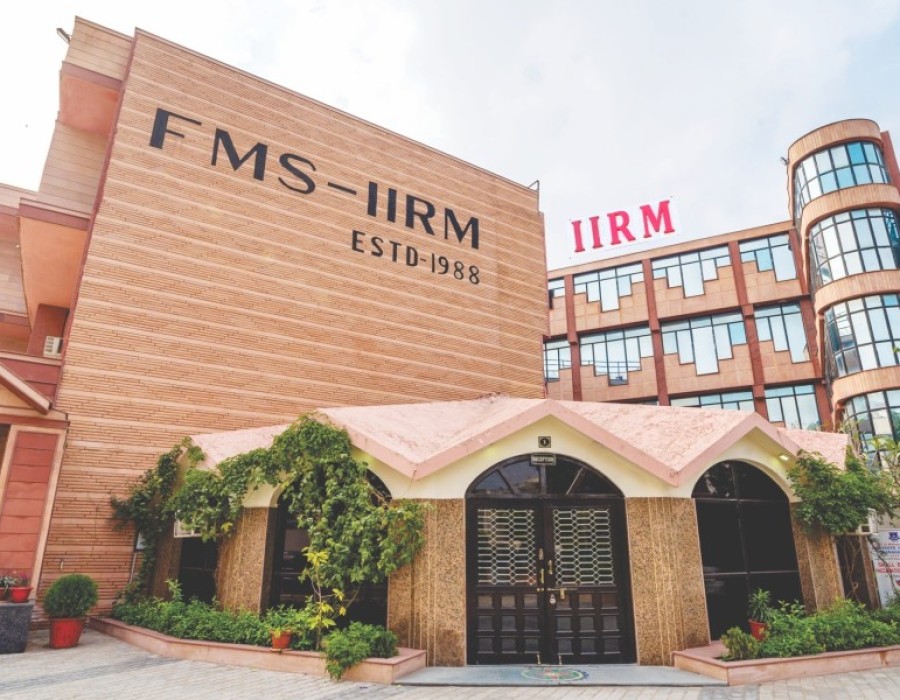Introduction
In the dynamic world of
business, where the global economy is constantly evolving, the need for
top-tier business schools is more critical than ever. In India, several
institutions have risen to prominence, offering world-class management
education. Among them, the Indian Institute of Rural Management (IIRM) stands
as a beacon of excellence in the field of business education. This article
delves into what makes IIRM one of the top business schools in India.
A Brief Overview of IIRM
The Indian Institute of Rural
Management (IIRM), situated in Jaipur, Rajasthan, is renowned for its
commitment to fostering excellence in rural and agri-business management.
Established in 1994, IIRM has grown over the years to become one of India's
premier institutions for management education. It is an autonomous, non-profit
institution that offers various programs designed to cater to the specific
needs of rural and agri-business management.
Academic Programs
IIRM offers a range of
academic programs designed to equip students with the knowledge and skills
required to excel in the field of rural and agri-business management. These
programs include:
Post Graduate Diploma in Rural Management (PGDRM): This flagship program focuses on providing students with a deep understanding of rural management. It covers a wide array of subjects, including rural marketing, finance, agriculture management, and rural development.
Post Graduate Diploma in Agri-Business Management (PGDABM): This program is tailored to individuals looking to pursue careers in agri-business. It encompasses subjects such as agricultural marketing, rural finance, and food supply chain management.
Management Development Programs (MDPs): IIRM also conducts several short-term training programs and workshops to enhance the skills of working professionals in the field.
Distinguished Faculty
The success of any educational
institution lies in the caliber of its faculty. IIRM boasts a distinguished
faculty with expertise in rural and agri-business management. These educators
are not only renowned in their respective fields but also deeply committed to
research and industry interaction, ensuring that students receive a
well-rounded education that combines theoretical knowledge with practical experience.
Research and Publications
IIRM places a strong emphasis
on research and has established a reputation for producing high-quality
research in the domains of rural management and agri-business. Faculty members
and students actively engage in research projects, and the institution
regularly publishes research papers, articles, and case studies. This
commitment to research keeps IIRM at the forefront of innovation and ensures
that the curriculum remains updated and relevant.
Industry Linkages
One of IIRM's distinguishing
features is its strong network and industry linkages. The institution
collaborates with numerous government and non-government organizations, as well
as corporate entities, to provide students with hands-on experience through
internships, field visits, and live projects. This practical exposure to the
industry is invaluable in preparing students for the real challenges of rural
and agri-business management.
Campus and Infrastructure
The IIRM campus in Jaipur is
equipped with state-of-the-art facilities, including modern classrooms, a
well-stocked library, computer labs, and accommodation for students. The serene
and green surroundings of the campus provide an ideal atmosphere for learning
and personal growth.
Conclusion
The Indian Institute of Rural
Management (IIRM) stands tall as a top business school in India, primarily due
to its unwavering commitment to rural and agri-business management. With a
focus on academic excellence, distinguished faculty, cutting-edge research,
industry linkages, and a world-class campus, IIRM continues to prepare students
to take on the challenges of managing rural and agri-businesses in an
ever-changing global economy. As India's rural and agri-business sectors
continue to grow, institutions like IIRM play a vital role in nurturing future
leaders who will drive this growth and transform the landscape of rural India.





Comments